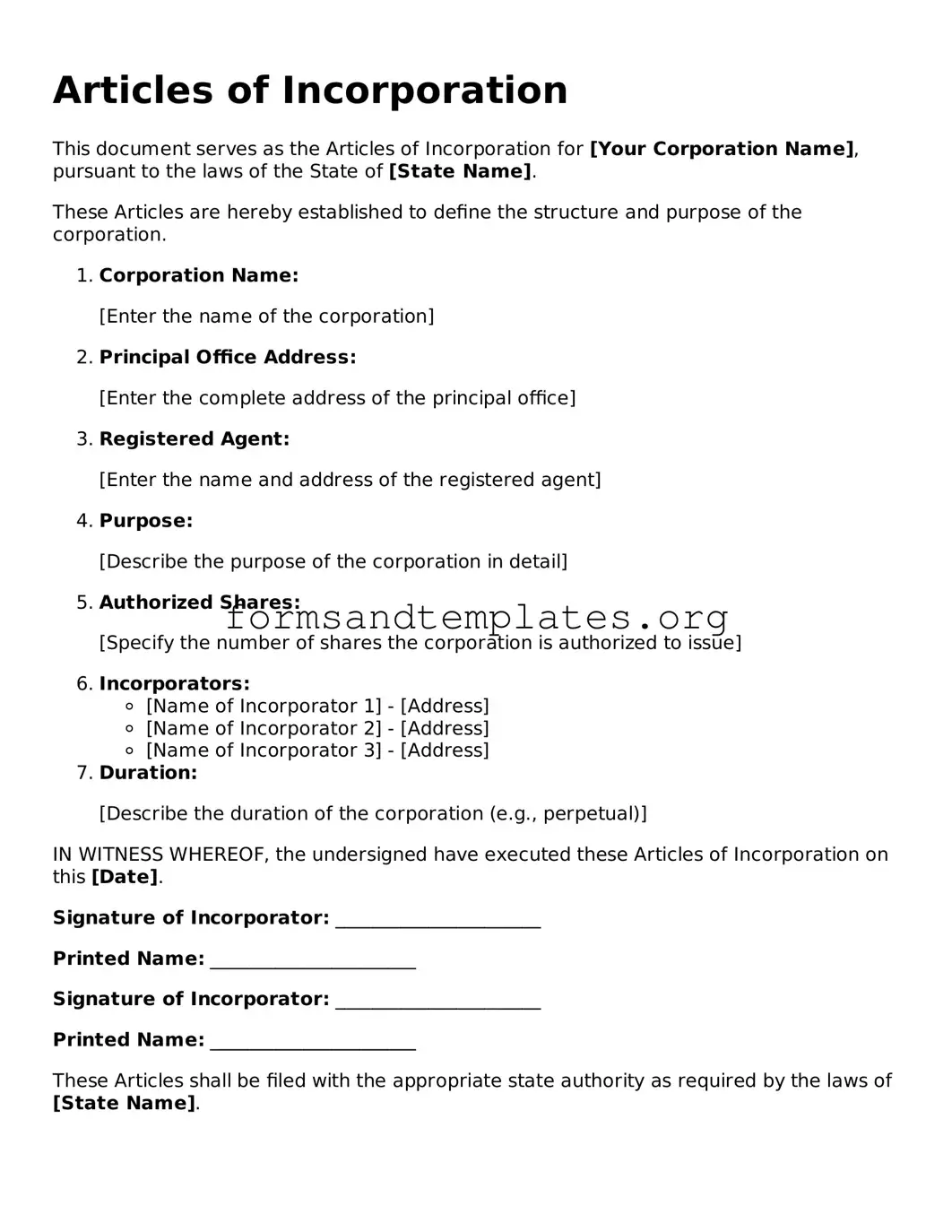Articles of Incorporation
This document serves as the Articles of Incorporation for [Your Corporation Name], pursuant to the laws of the State of [State Name].
These Articles are hereby established to define the structure and purpose of the corporation.
-
Corporation Name:
[Enter the name of the corporation]
-
Principal Office Address:
[Enter the complete address of the principal office]
-
Registered Agent:
[Enter the name and address of the registered agent]
-
Purpose:
[Describe the purpose of the corporation in detail]
-
Authorized Shares:
[Specify the number of shares the corporation is authorized to issue]
-
Incorporators:
- [Name of Incorporator 1] - [Address]
- [Name of Incorporator 2] - [Address]
- [Name of Incorporator 3] - [Address]
-
Duration:
[Describe the duration of the corporation (e.g., perpetual)]
IN WITNESS WHEREOF, the undersigned have executed these Articles of Incorporation on this [Date].
Signature of Incorporator: ______________________
Printed Name: ______________________
Signature of Incorporator: ______________________
Printed Name: ______________________
These Articles shall be filed with the appropriate state authority as required by the laws of [State Name].
